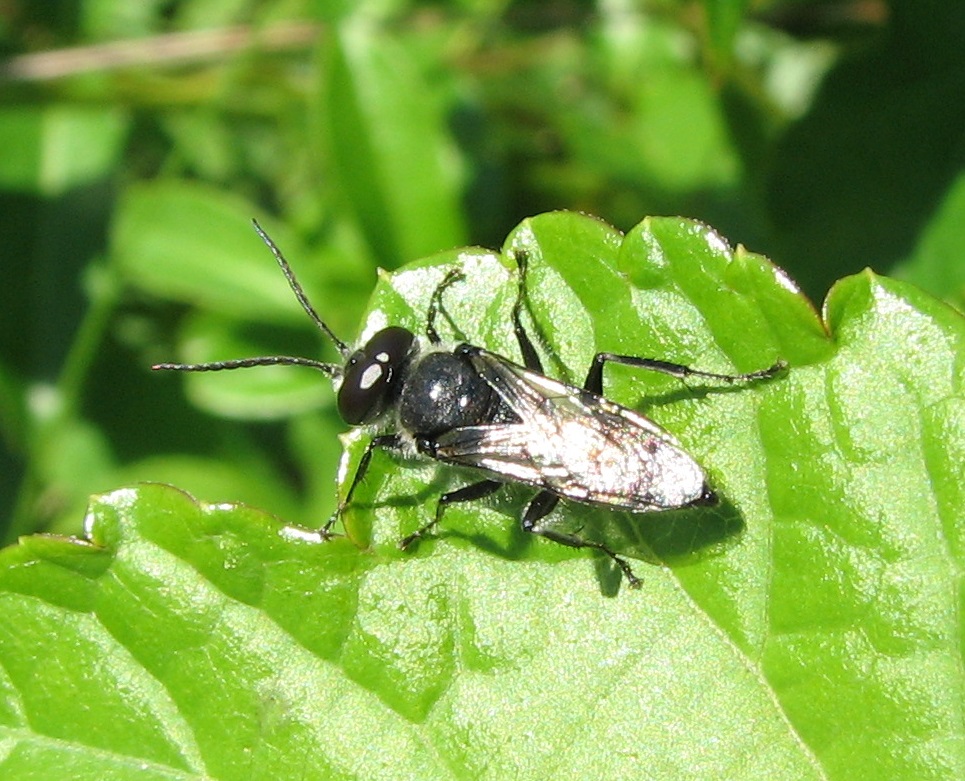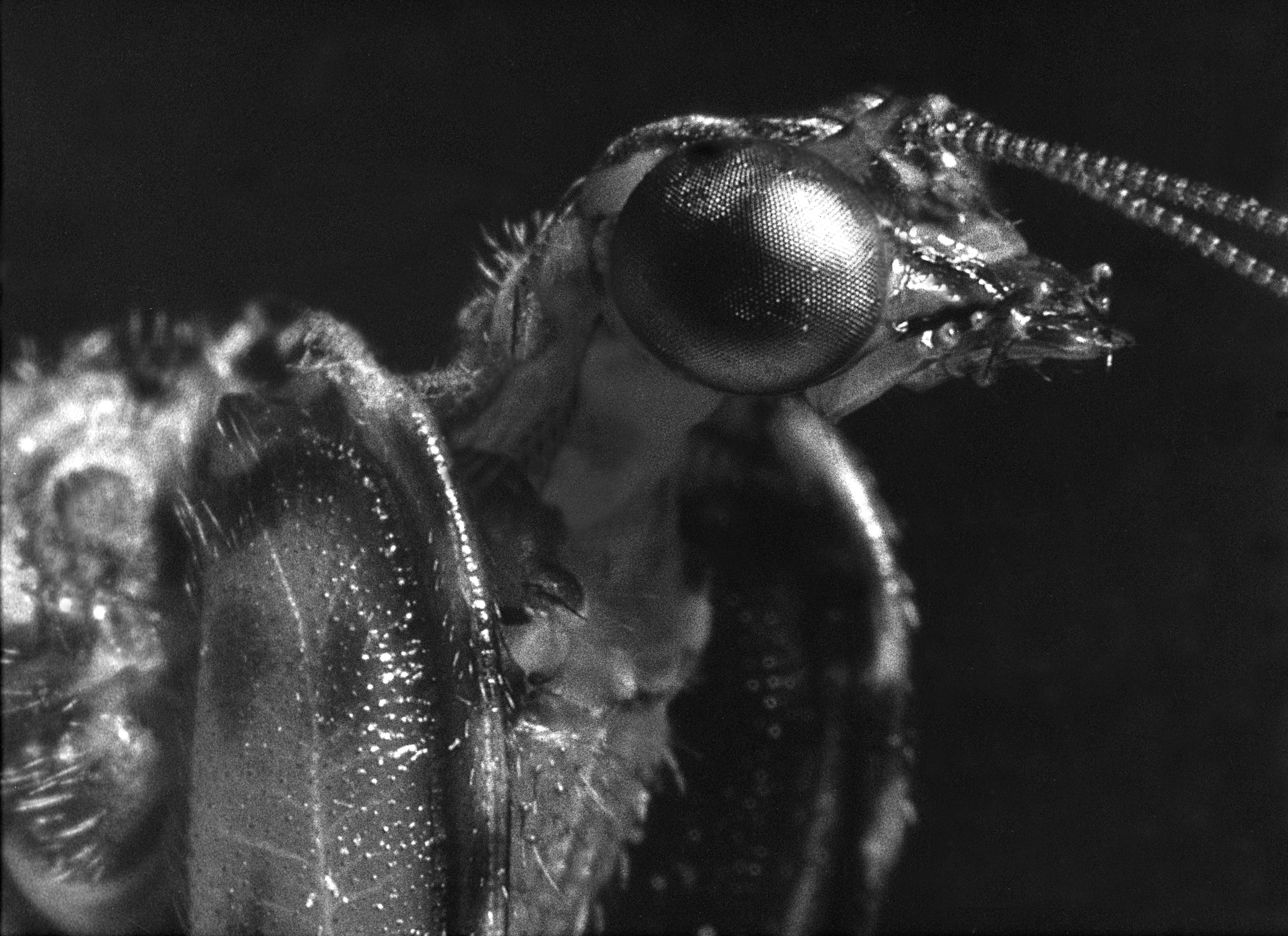|
Astatidae
Astatidae is a cosmopolitan family of solitary wasps, peculiar for their males having very large compound eyes that broadly meet at the top of the head. The largest genus in this family is ''Astata'', with about half of more than 160 species in the family. Phylogenomic analysis of Apoidea published in 2018 suggested that Astatinae, along with several other subfamilies a tribe and a subtribe, should be promoted to family rank: Ammoplanina to Ammoplanidae, Astatinae to Astatidae, Bembicinae to Bembicidae, Mellininae to Mellinidae, Pemphredoninae (minus Psenini and Ammoplanina) to Pemphredonidae, Philanthinae to Philanthidae Philanthidae is one of the largest families of wasp in the superfamily Apoidea, with 1167 species in 8 genera. Most of the species (more than 870) are in the genus '' Cerceris''. Taxonomy and phylogeny Historically, this group has frequently ..., and Psenini to Psenidae. References Apoidea Apocrita families Biological pest control wasps [...More Info...] [...Related Items...] OR: [Wikipedia] [Google] [Baidu] |
Astata
''Astata'' is a Cosmopolitan distribution, cosmopolitan genus of solitary predatory wasps in the family Astatidae. They are known to prey on adults and nymphs of Pentatomidae. ''Astata'' is the largest genus in this subfamily, and is identified by features of its wing venation. The males of this genus and the related genus ''Dryudella'' have very large compound eyes that broadly meet at the top of the head. There are 94 species and subspecies of ''Astata'' worldwide, a few of which are listed here: *''Astata affinis'' Vander Linden, 1829 *''Astata apostata'' Mercet, 1910 *''Astata bicolor'' Say, 1823 *''Astata boops'' (Schrank, 1781) *''Astata brevitarsus'' Puławski, 1958 *''Astata costae'' A. Costa, 1867 *''Astata diversipes'' Puławski, 1955 *''Astata gallica'' de Beaumont, 1942 *''Astata graeca'' de Beaumont, 1965 *''Astata leuthstromi'' Ashmead 1897 *''Astata minor'' Kohl, 1885 *''Astata occidentalis'' Cresson, 1881 *''Astata quettae'' Nurse, 1903 *''Astata rufipes'' Mocsáry ... [...More Info...] [...Related Items...] OR: [Wikipedia] [Google] [Baidu] |
Diploplectron
''Diploplectron'' is a genus of wasps in the family Astatidae Astatidae is a cosmopolitan family of solitary wasps, peculiar for their males having very large compound eyes that broadly meet at the top of the head. The largest genus in this family is ''Astata'', with about half of more than 160 species in .... There are more than 20 described species in ''Diploplectron''. Species These 22 species belong to the genus ''Diploplectron'': * '' Diploplectron alexandri'' Kazenas, 1996 * '' Diploplectron asiaticum'' Pulawski, 1965 * '' Diploplectron beccum'' F. Parker, 1972 * '' Diploplectron bidentatiformis'' Rohwer * '' Diploplectron brunneipes'' (Cresson, 1881) * '' Diploplectron californicum'' F. Parker, 1972 * '' Diploplectron diablense'' F. Williams, 1951 * '' Diploplectron ferrugineum'' Ashmead, 1899 * '' Diploplectron florissantensis'' Rohwer * '' Diploplectron fossor'' Rohwer, 1909 * '' Diploplectron irwini'' F. Parker, 1972 * '' Diploplectron kantsi'' Pate, 1941 * '' Dipl ... [...More Info...] [...Related Items...] OR: [Wikipedia] [Google] [Baidu] |
Dryudella
''Dryudella'' is a genus of wasps in the family Astatidae Astatidae is a cosmopolitan family of solitary wasps, peculiar for their males having very large compound eyes that broadly meet at the top of the head. The largest genus in this family is ''Astata'', with about half of more than 160 species in .... There are more than 50 described species in ''Dryudella''. Species These 57 species belong to the genus ''Dryudella'': * '' Dryudella albohirsuta'' Kazenas, 2000 * '' Dryudella amenartais'' (Pulawski, 1959) * '' Dryudella aquitana'' (Pulawski, 1970) * '' Dryudella arabica'' Schmid-Egger, 2014 * '' Dryudella aralensis'' Kazenas, 2000 * '' Dryudella beaumonti'' (Pulawski, 1959) * '' Dryudella bella'' (Cresson, 1881) * '' Dryudella bidens'' Kazenas, 2000 * '' Dryudella bifasciata'' (von Schulthess, 1926) * '' Dryudella caerulea'' (Cresson, 1881) * '' Dryudella deserti'' Schmid-Egger, 2014 * '' Dryudella dichoptica'' Kazenas, 2000 * '' Dryudella elegans'' (Cresson, 1881) * '' ... [...More Info...] [...Related Items...] OR: [Wikipedia] [Google] [Baidu] |
Apoidea
The superfamily Apoidea is a major group (of over 30 000 species) within the Hymenoptera, which includes two traditionally recognized lineages, the "sphecoid" wasps, and the bees. Molecular phylogeny demonstrates that the bees arose from within the traditional " Crabronidae", so that grouping is paraphyletic, and this has led to a reclassification to produce monophyletic families.Manuela Sann, Oliver Niehuis, Ralph S. Peters, Christoph Mayer, Alexey Kozlov, Lars Podsiadlowski, Sarah Bank, Karen Meusemann, Bernhard Misof, Christoph Bleidorn and Michael Ohl (2018) Phylogenomic analysis of Apoidea sheds new light on the sister group of bees. ''BMC Evolutionary Biology'' 18:71. doi:10.1186/s12862-018-1155-8 Diagnostic features Apoid wasps and bees have several traits in common:O'Neill, K.M. (2008). Apoid Wasps (Hymenoptera: Apoidea: Spheciformes). In: Capinera, J.L. (eds) Encyclopedia of Entomology. Springer, Dordrecht. https://doi.org/10.1007/978-1-4020-6359-6_10300 * The ... [...More Info...] [...Related Items...] OR: [Wikipedia] [Google] [Baidu] |
Astata Male
''Astata'' is a cosmopolitan genus of solitary predatory wasps in the family Astatidae. They are known to prey on adults and nymphs of Pentatomidae. ''Astata'' is the largest genus in this subfamily, and is identified by features of its wing venation. The males of this genus and the related genus ''Dryudella'' have very large compound eyes that broadly meet at the top of the head. There are 94 species and subspecies of ''Astata'' worldwide, a few of which are listed here: *'' Astata affinis'' Vander Linden, 1829 *'' Astata apostata'' Mercet, 1910 *'' Astata bicolor'' Say, 1823 *'' Astata boops'' (Schrank, 1781) *''Astata brevitarsus ''Astata'' is a Cosmopolitan distribution, cosmopolitan genus of solitary predatory wasps in the family Astatidae. They are known to prey on adults and nymphs of Pentatomidae. ''Astata'' is the largest genus in this subfamily, and is identified b ...'' Puławski, 1958 *'' Astata costae'' A. Costa, 1867 *'' Astata diversipes'' Puławski, 1955 *'' Ast ... [...More Info...] [...Related Items...] OR: [Wikipedia] [Google] [Baidu] |
Astata Boops
''Astata boops'' is a Palearctic The Palearctic or Palaearctic is a biogeographic realm of the Earth, the largest of eight. Confined almost entirely to the Eastern Hemisphere, it stretches across Europe and Asia, north of the foothills of the Himalayas, and North Africa. Th ... species of solitary wasp. It is associated with sandy habitats and preys on the nymphs of pentatomid bugs. References External linksImages representing ''Astata boops'' Hymenoptera of Europe Astatidae Insects described in 1781 {{apoidea-stub ... [...More Info...] [...Related Items...] OR: [Wikipedia] [Google] [Baidu] |
Apocrita Families
Apocrita is a suborder of insects in the order Hymenoptera. It includes wasps, bees, and ants, and consists of many families. It contains the most advanced hymenopterans and is distinguished from Symphyta by the narrow "waist" ( petiole) formed between the first two segments of the actual abdomen; the first abdominal segment is fused to the thorax, and is called the propodeum. Therefore, it is general practice, when discussing the body of an apocritan in a technical sense, to refer to the mesosoma and metasoma (or gaster) rather than the "thorax" and "abdomen", respectively. The evolution of a constricted waist was an important adaption for the parasitoid lifestyle of the ancestral apocritan, allowing more maneuverability of the female's ovipositor. The ovipositor either extends freely or is retracted, and may be developed into a stinger for both defense and paralyzing prey. Larvae are legless and blind, and either feed inside a host (plant or animal) or in a nest cell provisioned ... [...More Info...] [...Related Items...] OR: [Wikipedia] [Google] [Baidu] |
Compound Eye
A compound eye is a Eye, visual organ found in arthropods such as insects and crustaceans. It may consist of thousands of ommatidium, ommatidia, which are tiny independent photoreception units that consist of a cornea, lens (anatomy), lens, and photoreceptor cells which distinguish brightness and color. The image perceived by this arthropod eye is a combination of inputs from the numerous ommatidia, which are oriented to point in slightly different directions. Compared with single-aperture eyes, compound eyes have poor image resolution; however, they possess a very large view angle and the ability to detect fast movement and, in some cases, the Polarization (waves), polarization of light. Because a compound eye is made up of a collection of ommatidia, each with its own lens, light will enter each ommatidium instead of using a single entrance point. The individual light receptors behind each lens are then turned on and off due to a series of changes in the light intensity during mov ... [...More Info...] [...Related Items...] OR: [Wikipedia] [Google] [Baidu] |
Wasp
A wasp is any insect of the narrow-waisted suborder Apocrita of the order Hymenoptera which is neither a bee nor an ant; this excludes the broad-waisted sawflies (Symphyta), which look somewhat like wasps, but are in a separate suborder. The wasps do not constitute a clade, a complete natural group with a single ancestor, as bees and ants are deeply nested within the wasps, having evolved from wasp ancestors. Wasps that are members of the clade Aculeata can sting their prey. The most commonly known wasps, such as yellowjackets and hornets, are in the family Vespidae and are eusocial, living together in a nest with an egg-laying queen and non-reproducing workers. Eusociality is favoured by the unusual haplodiploid system of sex determination in Hymenoptera, as it makes sisters exceptionally closely related to each other. However, the majority of wasp species are solitary, with each adult female living and breeding independently. Females typically have an oviposit ... [...More Info...] [...Related Items...] OR: [Wikipedia] [Google] [Baidu] |
Bembicidae
The Bembicidae comprise a large family of apoid wasps that includes over 80 genera and over 1800 species which have a worldwide distribution. They excavate nests in the soil, frequently in sandy soils, and store insects of several orders, for example Diptera, Orthoptera, Hemiptera, Lepidoptera and Odonata in the burrows. Some species are kleptoparasites of other Bembicidae. The different subgroups of Bembicidae are each quite distinctive, and rather well-defined, with clear morphological and behavioral differences between them. Taxonomy and phylogeny Bembicids were originally a part of a single large family, the Sphecidae The Sphecidae are a Cosmopolitan distribution, cosmopolitan family of wasps of the suborder Apocrita that includes Ammophilinae, sand wasps, mud daubers, and other thread-waisted wasps. The name Sphecidae was formerly given to a much larger g ..., then for many years were treated as a separate family, and recently have been placed back into a larger fam ... [...More Info...] [...Related Items...] OR: [Wikipedia] [Google] [Baidu] |
Mellinidae
Mellinidae is a small family of wasps, comprising 17 described species in two genera. These wasps are found in the Nearctic, Neotropical, Indomalayan and Palaearctic realms. This group has traditionally been treated as a subfamily within Crabronidae The Crabronidae is a large family of wasps within the superfamily Apoidea. Taxonomy and phylogeny This family has historically been treated as a subfamily in the now-defunct Spheciformes group under the family Sphecidae. The Spheciformes inclu ... (Mellininae), but recent phylogenomic studies have shown it to be a distinct family. References Apocrita families Apoidea Taxa described in 1802 Taxa named by Pierre André Latreille {{apoidea-stub ... [...More Info...] [...Related Items...] OR: [Wikipedia] [Google] [Baidu] |

